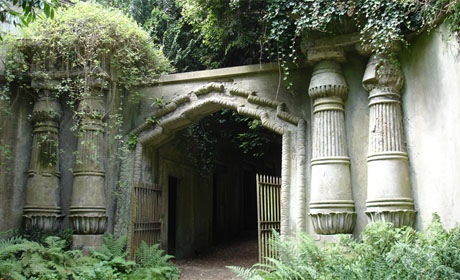Highgate Cemetery
London, England

Built in 1839, Highgate was one of Victorian London’s most elaborate cemeteries, with Gothic catacombs and mausoleums in Egyptian and Classical styles, before declining and being overtaken by nature. It is now a nature reserve as well as an active cemetery, and is famous as much for its overgrown, dramatic atmosphere, loved by photographers and filmmakers, as for the notable people buried there, ranging from Karl Marx to Douglas Adams.

The rocks used for headstones make Highgate a great place to see a wide range of geology in an urban setting. In the East Cemetery these include granites, gabbros, larvikite and marbles, with some limestone monuments containing fossils, and more diverse gneisses and slates in the newer graves.
The East Cemetery is open to the public, and the grander and more overgrown West Cemetery can be visited on organised tours.
Text from the Highgate Cemetery Website and the booklet ‘Geology and London’s Victorian Cemeteries’ by Dr David Cook
Watch the British Geological Survey's video to find out more about building stones: